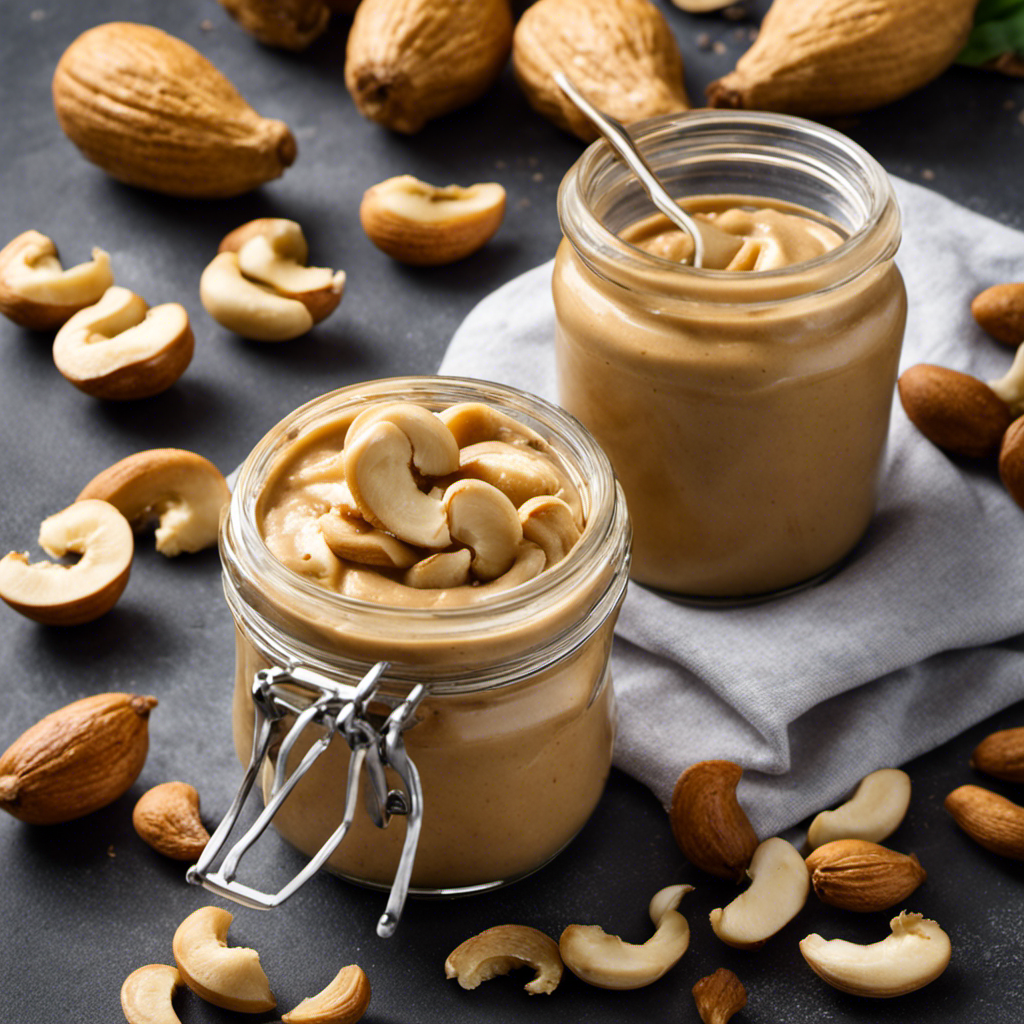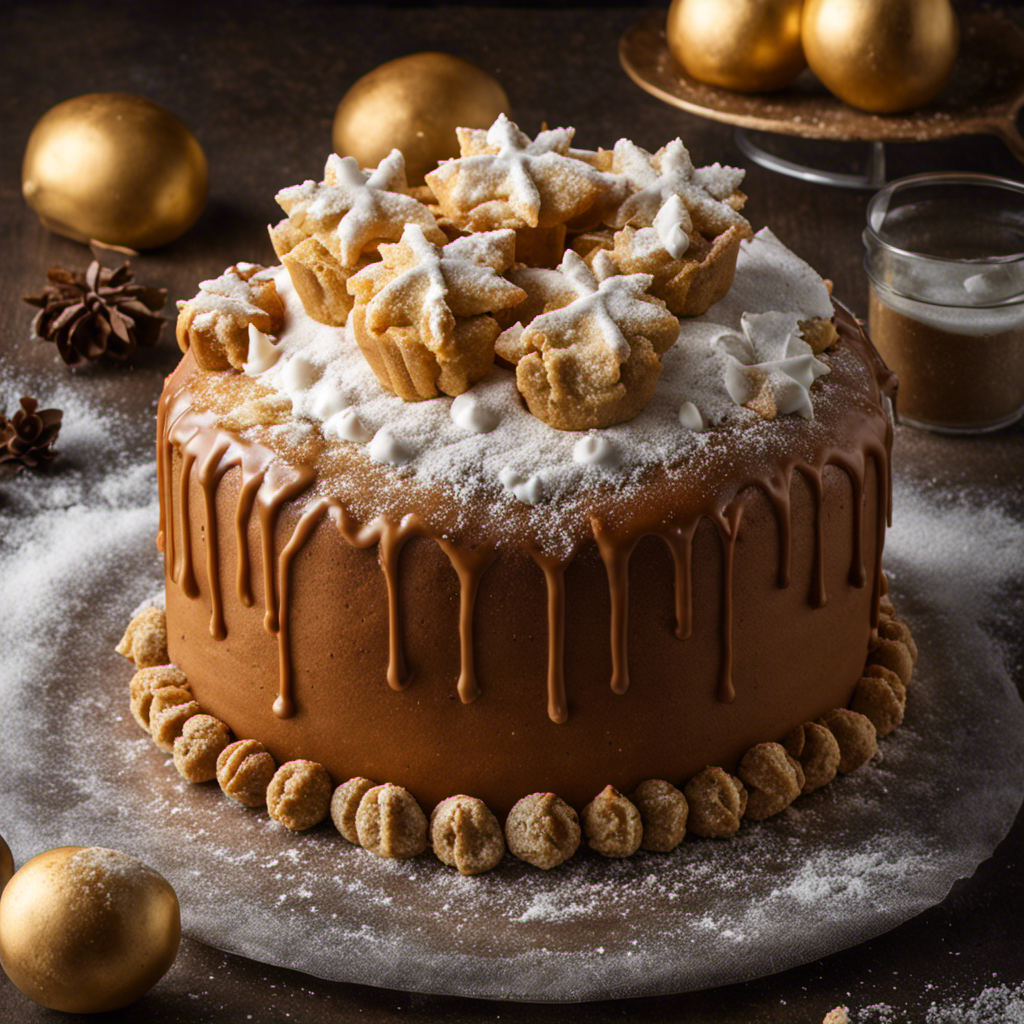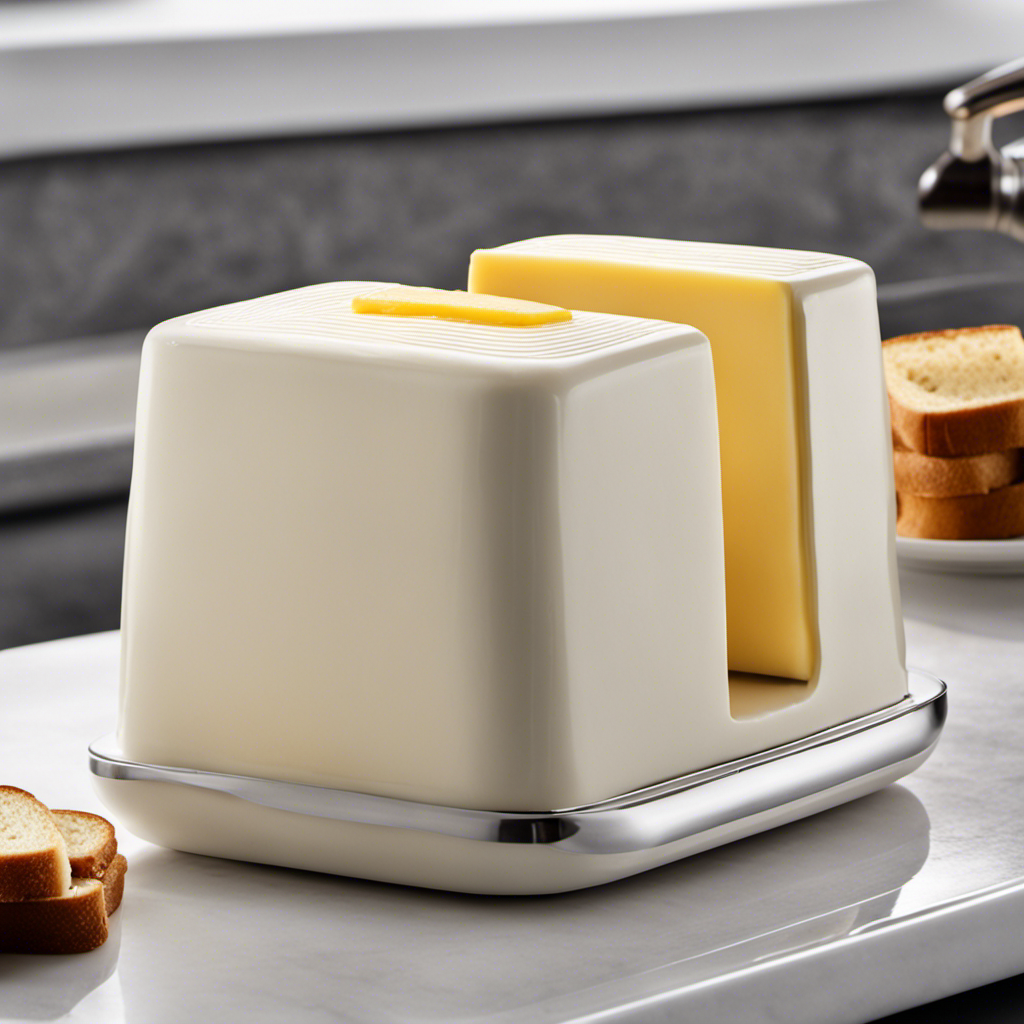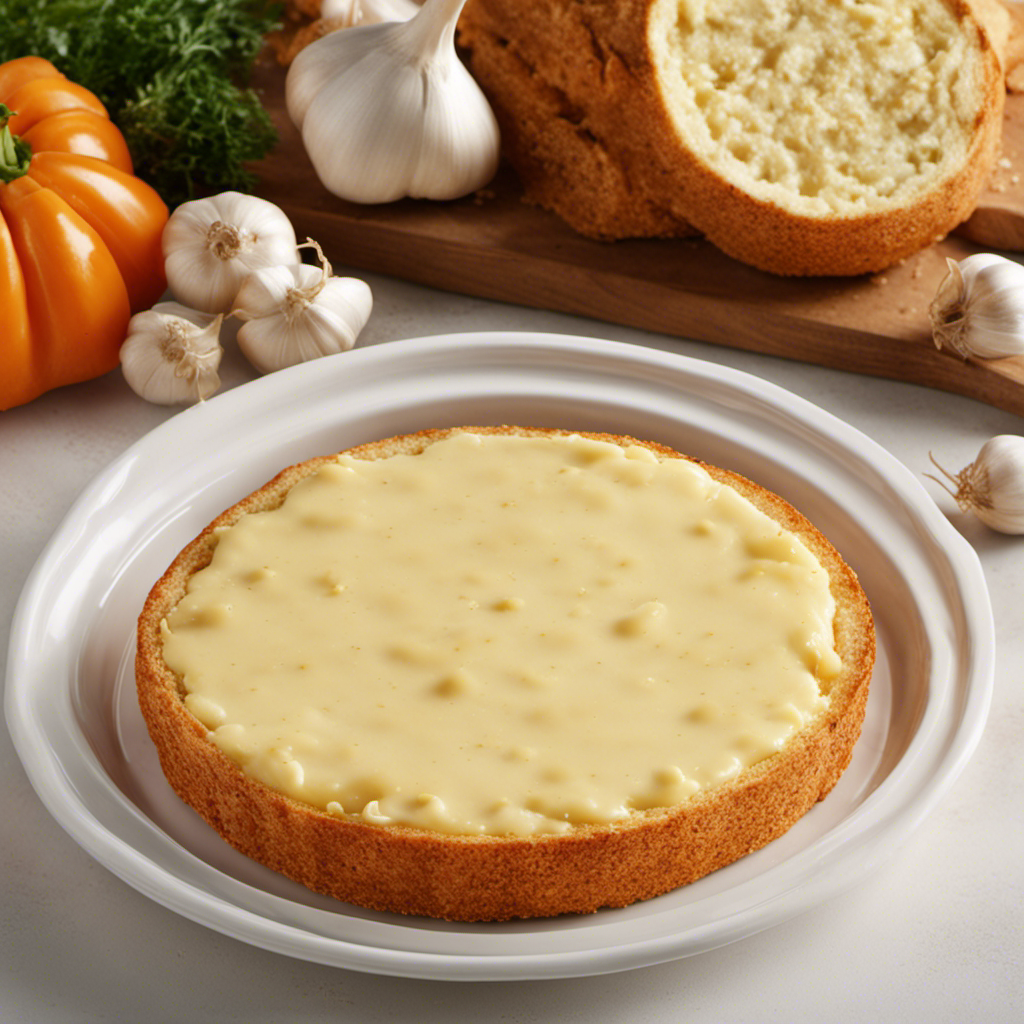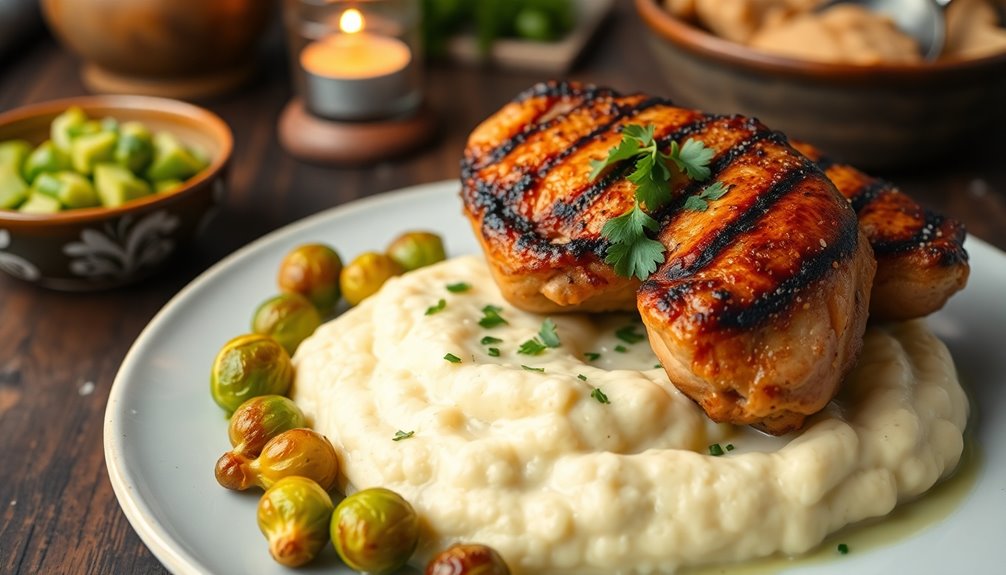I have always been fond of nut butters, but cashew butter has become my top choice. The creamy texture and delicate nutty taste make it ideal for spreading on toast, fruit, or incorporating it into recipes.
In this article, I’ll guide you through the process of making your own homemade cashew butter, from selecting the right cashews to adjusting the consistency to your liking.
Get ready to embark on a delicious journey that will leave you with a jar of irresistible cashew goodness.
Key Takeaways
- Look for fresh and unsalted cashews that are plump, firm, and light beige in color.
- Soak cashews for at least 2 hours or overnight to make them easier to blend and remove phytic acid.
- Consider alternatives to cashew butter such as almond butter, peanut butter, and sunflower seed butter.
- Experiment with enhancing the flavor and consistency of cashew butter by roasting cashews, adjusting blender settings, adding oils and sweeteners, and trying different spices and flavorings.
Selecting the Right Cashews
When selecting the right cashews for making cashew butter, it’s important to look for ones that are fresh and unsalted. Choosing the best cashews is crucial because it affects the taste and texture of the final product.
Cashews are a popular choice for making nut butter due to their mild, creamy flavor. Compared to other nut butters, cashew butter has a smoother consistency and a naturally sweet taste. Look for cashews that are plump, firm, and have a light beige color. Avoid cashews that are discolored, shriveled, or have a rancid smell.
It’s also best to choose unsalted cashews to have better control over the salt content in your cashew butter.
Now that you know how to select the right cashews, let’s move on to soaking them for optimal results.
Soaking the Cashews
When it comes to making cashew butter, one important step is soaking the cashews. Soaking time for cashews can vary, but I typically soak them for at least 2 hours or overnight.
Soaking cashews has several benefits. It makes them easier to blend, improves their digestibility, and enhances their nutritional value by activating enzymes and reducing phytic acid.
Soaking Time for Cashews
The ideal soaking time for cashews is usually around 4-6 hours. During this time, the cashews absorb water, which softens them and removes the natural enzyme inhibitors they contain. Soaking cashews is an important step in making cashew butter as it improves the texture and taste of the final product.
Here are some popular soaking methods:
- Traditional method: Soak cashews in water for 4-6 hours.
- Quick soak method: Pour boiling water over cashews and let them sit for 1-2 hours.
- Saltwater soak: Soak cashews in saltwater to enhance flavor.
- Fermentation soak: Soak cashews with probiotic culture for added health benefits.
- Lemon soak: Soak cashews in lemon juice to neutralize phytic acid.
Soaking cashews offers several benefits, including improved digestion, increased nutrient absorption, and easier blending. It also helps to remove any bitterness and makes the cashews easier to process into a smooth and creamy butter.
With the cashews properly soaked, let’s move on to the next step in making delicious cashew butter.
Benefits of Soaking Cashews
To fully enjoy the benefits of soaking cashews, you’ll want to ensure you give them enough time to absorb water and soften. Soaking cashews is important because it helps to improve their digestibility and enhances their nutritional value.
When you soak cashews, it activates enzymes that break down anti-nutrients, making them easier for your body to digest. Additionally, soaking also helps to remove phytic acid, a compound that can interfere with nutrient absorption.
There are a few different techniques you can use to soak cashews. One method is to simply cover the cashews with water and let them soak for at least four hours or overnight. Another technique is to boil water and pour it over the cashews, letting them soak for about 15 minutes.
Whichever method you choose, make sure to drain and rinse the cashews before using them in your recipes.
Draining and Rinsing the Cashews
When it comes to making cashew butter, one important step is soaking the cashews before blending. Soaking the cashews helps to soften them, making them easier to blend into a smooth and creamy butter.
Additionally, soaking cashews can also help to remove any bitterness and improve the overall taste of the butter. It is also important to rinse the cashews after soaking to remove any residual dirt or debris, ensuring a clean and pure final product.
Soaking Cashews Before Blending
Before blending, you’ll want to soak the cashews to achieve a creamy consistency in your cashew butter. Soaking cashews has numerous benefits and is an essential step in the process. Here are the best soaking methods to ensure the perfect cashew butter:
-
Overnight Soaking: Place the cashews in a bowl and cover them with water. Let them soak overnight for at least 8 hours. This method allows the cashews to fully soften and become easier to blend.
-
Quick Soaking: If you’re short on time, you can also do a quick soak. Place the cashews in a bowl, cover them with boiling water, and let them soak for 1-2 hours. This method speeds up the softening process.
-
Salted Soaking: For added flavor, you can soak the cashews in salted water. Simply add a teaspoon of salt to the water before soaking. This method enhances the taste of the cashews in the final butter.
-
Acidic Soaking: Another option is to soak the cashews in acidic water, such as lemon juice or apple cider vinegar diluted in water. This method helps break down the phytic acid in the cashews, making them easier to digest.
-
Refrigerated Soaking: If you’re concerned about the cashews going bad, you can soak them in the refrigerator. Place the cashews and water in an airtight container and let them soak for 8-12 hours in the fridge. This method helps prevent bacterial growth.
Importance of Rinsing Cashews?
Rinsing the soaked cashews thoroughly under cold water is essential for removing any residue and ensuring a clean base for your creamy creation. When making cashew butter, it is important to start with clean and fresh ingredients to achieve the best flavor and texture. By rinsing the cashews, you eliminate any dirt, dust, or unwanted flavors that may be present on the nuts. This step also helps to remove any anti-nutrients or enzyme inhibitors that can hinder digestion and absorption of nutrients. Additionally, rinsing the cashews can reduce the risk of bacterial contamination.
Incorporating alternative nuts or seeds into your butter recipes can offer a variety of flavors and added health benefits. Some popular cashew butter alternatives include almond butter, peanut butter, and sunflower seed butter. Each of these alternatives has its own unique taste and nutritional profile. For example, almond butter is rich in vitamin E and healthy fats, while peanut butter is a good source of protein and fiber. Sunflower seed butter is high in vitamin E and selenium, which are important antioxidants.
| Cashew Butter Alternatives | Flavor | Nutritional Benefits |
|---|---|---|
| Almond Butter | Nutty | Rich in vitamin E and healthy fats |
| Peanut Butter | Creamy | Good source of protein and fiber |
| Sunflower Seed Butter | Earthy | High in vitamin E and selenium, important antioxidants |
Cashews themselves have numerous health benefits. They are packed with essential minerals like magnesium, phosphorus, and zinc, which are important for bone health and immune function. Cashews are also a good source of healthy fats, including monounsaturated fats, which can promote heart health. Furthermore, cashews contain antioxidants like vitamin E and plant compounds such as polyphenols, which have been linked to a reduced risk of chronic diseases. Incorporating cashews into your diet, whether in the form of butter or as a snack, can provide these health benefits and enhance your overall well-being.
Roasting the Cashews (Optional
You can choose to roast the cashews before making cashew butter. Roasting the cashews can enhance the flavor and texture of the final product. Here are some benefits of roasting cashews:
-
Enhanced flavor: Roasting brings out the natural nuttiness and sweetness of cashews, giving your cashew butter a rich and delicious taste.
-
Improved texture: Roasting the cashews helps to remove excess moisture, resulting in a smoother and creamier butter.
-
Increased shelf life: The roasting process helps to extend the shelf life of cashews, making your cashew butter last longer.
-
Nutritional benefits: Roasting cashews can enhance the bioavailability of certain nutrients, such as antioxidants and minerals.
-
Alternative soaking methods: If you prefer not to roast the cashews, you can soak them in water overnight or for a few hours. This softens the cashews and makes them easier to blend into butter.
Blending the Cashews
After roasting, blend the cashews until they reach a smooth and creamy consistency. Adjusting blender settings can help achieve the desired texture. Start by adding the roasted cashews to the blender and secure the lid tightly. Set the blender to its lowest setting to begin the blending process. Gradually increase the speed as the cashews break down and become smoother. If the mixture seems too thick or dry, you can add a small amount of oil, such as coconut or vegetable oil, to help loosen it up. On the other hand, if the mixture becomes too thin, you can add more cashews to thicken it. Troubleshooting blending issues may involve stopping the blender, scraping down the sides, and then continuing to blend until the desired consistency is reached.
| Blending Tip | Emotional Response |
|---|---|
| Adjusting blender settings | Excitement |
| Adding oil for creaminess | Satisfaction |
| Troubleshooting blending issues | Relief |
| Achieving smooth and creamy consistency | Accomplishment |
Adding Oil (Optional
After blending the cashews to a smooth and creamy consistency, the next step is to add oil to enhance the texture and flavor of the cashew butter. While this step is optional, it can make a significant difference in the final product.
Here are a few pointers to consider when adding oil:
- Choose a neutral-tasting oil like avocado or grapeseed oil to avoid overpowering the delicate cashew flavor.
- Start by adding a tablespoon of oil at a time and blend it into the cashew mixture until you achieve the desired consistency.
- Incorporating honey can add a touch of sweetness to the cashew butter. Start with a teaspoon and adjust according to your preference.
- Adding a pinch of salt helps to balance the flavors and enhance the natural nuttiness of the cashews.
- Remember to taste the cashew butter as you go and adjust the oil, honey, and salt to suit your personal preference.
Now that we have discussed adding oil, let’s move on to the next section, which is incorporating sweeteners (optional).
Incorporating Sweeteners (Optional
To enhance the taste of your cashew blend, consider incorporating optional sweeteners like honey or maple syrup for a touch of sweetness. These natural sweeteners not only add flavor but also offer some health benefits. Honey, for instance, is rich in antioxidants and has antibacterial properties. Maple syrup, on the other hand, contains minerals like manganese and zinc. When selecting sweeteners for your cashew butter, it’s important to choose high-quality options that are free from additives and artificial ingredients. Below is a table that compares different sweeteners alternatives you can use in your cashew butter:
| Sweetener | Taste | Health Benefits |
|---|---|---|
| Honey | Sweet | Antioxidants, Antibacterial properties |
| Maple Syrup | Sweet | Minerals like manganese and zinc |
| Coconut Sugar | Sweet | Vitamins and minerals |
| Dates | Sweet | Fiber, Potassium |
Mixing in Flavorings (Optional
When it comes to enhancing taste with spices, there are countless options to explore. From fragrant herbs like basil and thyme to bold spices like cumin and paprika, each ingredient can add a unique and delicious flavor to your dishes.
Additionally, experimenting with unique flavors can be a fun and exciting way to elevate your cooking. Whether it’s adding a touch of smokiness with chipotle powder or a hint of sweetness with cardamom, the possibilities are endless when it comes to creating unforgettable taste experiences.
Enhancing Taste With Spices
One way to enhance the taste of cashew butter is by adding a pinch of cinnamon for a warm and cozy flavor. Cinnamon not only adds a delightful aroma but also offers several health benefits.
Here are some spice pairing ideas to further elevate your cashew butter experience:
-
Nutmeg: A sprinkle of nutmeg adds a subtle earthiness and complements the creamy texture of cashew butter.
-
Cardamom: This aromatic spice brings a unique citrusy and floral flavor, adding a refreshing twist to your cashew butter.
-
Ginger: Adding a touch of ginger provides a warm and slightly spicy kick, enhancing the overall taste of your cashew butter.
-
Vanilla: A few drops of vanilla extract lend a sweet and comforting flavor, making your cashew butter taste even more indulgent.
-
Allspice: This versatile spice combines flavors of cinnamon, nutmeg, and cloves, creating a complex and rich taste profile in your cashew butter.
Experimenting With Unique Flavors
If you’re feeling adventurous, why not try adding unexpected flavors like chili powder or rosemary to your cashew spread? These unique flavor combinations can take your cashew butter to a whole new level. Experimenting with different spices and herbs not only adds an exciting twist to the taste but also enhances the overall experience.
For example, a pinch of chili powder can give your spread a subtle heat, while rosemary adds a savory and aromatic note. Additionally, you can also experiment with texture by incorporating ingredients like crushed nuts or dried fruits for a delightful crunch or chewiness. These creative additions allow you to customize your cashew butter to suit your preferences and create a truly unique flavor profile.
And speaking of customization, let’s now explore how you can adjust the consistency of your cashew spread.
Adjusting the Consistency
To make cashew butter creamier, you can add a little bit of oil. Adjusting the consistency of cashew butter is important to achieve the desired texture and spreadability.
Here are some troubleshooting tips and ideas for adding flavors and mix-ins to enhance your cashew butter experience:
- Add a dash of coconut oil or avocado oil for a smoother consistency.
- Gradually incorporate small amounts of water to thin out thick cashew butter.
- For a sweeter taste, mix in honey, maple syrup, or a few drops of vanilla extract.
- Experiment with different spices like cinnamon, nutmeg, or cardamom for added flavor.
- Try incorporating mix-ins such as chopped nuts, dried fruits, or chocolate chips for a delightful crunch or extra burst of flavor.
Storing the Cashew Butter
When storing your cashew butter, remember to keep it in an airtight container to maintain its freshness and prevent it from drying out. Proper storage is essential for preserving cashew butter and extending its shelf life. Here are some tips to help you keep your cashew butter in optimal condition:
| Tip | Explanation |
|---|---|
| Use an airtight container | This prevents air from entering the container, which can cause the cashew butter to oxidize and spoil. |
| Store in a cool, dark place | Exposure to light and heat can degrade the quality of the cashew butter. Find a cool pantry or cupboard away from direct sunlight. |
| Avoid moisture and contaminants | Moisture can cause the cashew butter to spoil, so make sure the container is completely dry before storing. Avoid introducing contaminants. |
Using Cashew Butter in Recipes
Now that we know how to store cashew butter, let’s explore the different ways we can use it in recipes.
Cashew butter is incredibly versatile and can be used as a spread or as an ingredient in baking. Here are some exciting ways to incorporate cashew butter into your culinary creations:
- Spread it on toast or rice cakes for a delicious and nutritious breakfast or snack.
- Use it as a substitute for peanut butter in sandwiches or as a dip for fruits and vegetables.
- Add it to smoothies for a creamy texture and a boost of protein.
- Incorporate it into sauces and dressings for a rich and nutty flavor.
- Use it in baking recipes, like cookies, cakes, and brownies, to add moisture and a subtle nuttiness.
With its smooth and creamy texture, cashew butter adds a unique and delightful twist to any dish. So go ahead and experiment with this delicious ingredient in your next culinary adventure!
Tips and Tricks for Making Cashew Butter
For a smoother consistency, you can soak the cashews in water before blending them. Soaking the cashews helps to soften them, making them easier to blend into a creamy butter. To do this, simply place the cashews in a bowl and cover them with water. Let them soak for at least 4 hours, or overnight for best results. After soaking, drain the water and rinse the cashews before blending.
While cashews are a popular choice for nut butter, there are also alternative nut options that you can try. Almonds, peanuts, and macadamia nuts can all be used to make delicious nut butters. Each nut has its own unique flavor profile, so feel free to experiment and find your favorite.
Just like with cashews, you can soak these nuts before blending for a smoother consistency. Remember to adjust the soaking time based on the size and hardness of the nut.
Frequently Asked Questions
Can I Use Roasted Cashews Instead of Raw Cashews?
Yes, you can use roasted cashews instead of raw cashews to make cashew butter. Roasting cashews adds a delicious nutty flavor and enhances their crunchiness. However, keep in mind that roasting may slightly reduce the health benefits of cashews.
How Long Should I Soak the Cashews For?
I soak the cashews for at least 4 hours to achieve a creamy cashew butter consistency. Soaking helps soften the cashews and makes them easier to blend, resulting in a smooth and delicious spread.
Do I Need to Add Oil to the Cashew Butter?
I don’t need to add oil to the cashew butter. Cashews have enough natural oils to create a creamy texture. However, you can experiment with different nuts or flavorings to make unique variations.
Can I Use a Blender Instead of a Food Processor?
Yes, you can use a blender instead of a food processor to make cashew butter. The pros of using a blender are its versatility and convenience, but the cons are that it may not achieve the same smooth consistency as a food processor.
Can I Use Alternative Sweeteners Like Honey or Maple Syrup in the Cashew Butter?
Yes, you can use alternative sweeteners like honey or maple syrup in cashew butter. It adds a touch of sweetness without overpowering the nutty flavor. Experiment with different soaking methods for the cashews for a creamy texture.
Conclusion
In conclusion, making cashew butter is a simple and rewarding process. By following the steps outlined in this article, you can create a delicious and creamy spread that can be used in various recipes.
Whether you choose to roast the cashews or not, the end result will be a rich and nutty flavor that is hard to resist. So why not give it a try? Who can resist the temptation of homemade cashew butter?
Start experimenting with this versatile ingredient and elevate your culinary creations to a whole new level.
